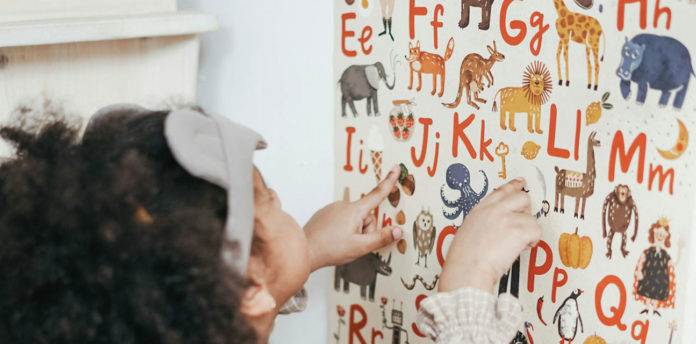It might seem childish, but if you’re starting to learn French, beginning with the alphabet is the cornerstone of mastering pronunciation, reading, and writing. This article explains why it’s important to learn the French alphabet, strategies for effective learning, and practical tips for incorporating study into daily life.
Why Should You Learn the French Alphabet?
When we learn a new language as adults, we often think we won’t have to take the same lessons as when we were children. But why would we want to skip the beginning? Learn the French alphabet! The French alphabet, consisting of 26 letters similar to the English alphabet, is the foundation upon which the language is built. A thorough understanding of the alphabet is crucial for several reasons:
- Pronunciation: French pronunciation can be challenging for learners, with specific sounds that do not exist in other languages. Learning the alphabet helps in mastering these unique sounds.
- Spelling and Reading: Knowing the alphabet is essential for spelling words correctly and improving reading skills. It enables learners to decode new words and understand written content.
- Confidence Booster: Starting with something as fundamental as the alphabet can boost learners’ confidence and provide a solid foundation to build upon.

Learn the French Alphabet
Here are the 26 letters from the French alphabet with the pronunciation as you would describe it to someone, and the pronunciation using the phonetic alphabet.
| Lettre | Prononciation décrite | Prononciation phonétique |
| a | a | /ɑ/ |
| b | bé | /be/ |
| c | cé | /se/ |
| d | dé | /de/ |
| e | e, (é) | /ə/, (/e/) |
| f | effe ou èffe | /ɛf/ |
| g | gé | /ʒe/ |
| h | ache | /aʃ/ |
| i | i | /i/ |
| j | ji ou gi | /ʒi/ |
| k | ka | /kɑ/ |
| l | elle ou èlle | /ɛl/ |
| m | emme ou èmme | /ɛm/ |
| n | enne ou ènne | /ɛn/ |
| o | o | /o/ |
| p | pé | /pe/ |
| q | ku | /ky/ |
| r | erre ou ère | /ɛʁ/ |
| s | esse ou èsse | /ɛs/ |
| t | té | /te/ |
| u | u | /y/ |
| v | vé | /ve/ |
| w | double vé | /dublə ve/ |
| x | ikse | /iks/ |
| y | i grec | /igʁɛk/ |
| z | zède | /zɛd/ |
In addition to the 26 letters, there are also some different variants and two French ligatures.
à: a with an “accent grave”, like in : “Je vais à la maison”
â: a with an “accent circonflexe”, like in “un château”
ç: c cédille, like in “un garçon”
é: e with an “accent aigü”, like in “une poupée”
è: e with an “accent grave”, like in “la mère”
ê: e with an “accent circonflexe”, like in “la fête”
î: i with an “accent circonflexe”, like in “le dîner”
ï: i with an “accent tréma”, like in “le maïs”
ô: o with an ”accent circonflexe”, like in “le cône”
ù: u with an “accent grave”, like in “où vas-tu ?”
ü: u with an accent tréma, like in “accent aigü”
û: u with an accent circonflexe, like in “le goût”
æ: blending of the letters a and e, like in “ex æquo”
œ: blending of the letters o and e, like in “un œuf”
Effective Pronunciation Learning Strategies
You’re now learning the alphabet. That’s great. But how can you be sure you have the right pronunciation ? Even if you master the pronunciation of the letters on their own, it can change when these letters are mixed in a word. For example, you can know how to pronounce the letter “g”, but can you pronounce it in the word “garage” ? Here are some tips and tricks to work on your pronunciation.
Listen and Repeat:
Use resources like language learning apps, YouTube channels, and pronunciation guides to listen to the pronunciation of each letter and accompanying examples. Repetition is key to mastering the sounds.
Phonetic Exercises:
Engage in phonetic exercises that focus on difficult sounds, such as the nasal sounds or the French “R.” Practice these sounds in isolation, then in words, and finally in sentences.
Sing the Alphabet Song:
Just like in English, French has its own alphabet song. Singing along can aid in memorization and improve pronunciation.

Tips for Integrating Learning into Daily Life
Finally, how can you be sure to integrate your French lesson in your daily life? Let’s be honest, singing the Alphabet song all day long won’t do the trick. But you can play with letters and spelling!
Label Everyday Objects
Place labels on objects around your home with their French names. This visual aid reinforces word recognition and spelling.
Daily Word
Choose a new letter each day and learn a few words starting with that letter. Use the word throughout the day in sentences or try writing a short paragraph.
Use Flashcards
Create flashcards for each letter with the letter on one side and a word that starts with that letter on the other. Include a picture to help with memorization.
Incorporate Technology
Set your phone or computer to French. This immersion technique helps you familiarize yourself with the alphabet in a practical context.
Practice with Native Speakers
If possible, practice speaking with native French speakers. This real-life application not only improves pronunciation but also helps in understanding the natural flow of the language.
So, let’s learn the French alphabet! Mastering the French alphabet is more than just memorizing 26 letters: it’s about laying a solid foundation for future language skills. By integrating these tips into your daily routine, you can enhance your pronunciation, reading, and overall language proficiency. Only then will you be able to learn brand new words, like the words from the OQLF.
Remember, language learning is a journey—be patient, consistent, and open to making mistakes, for they are part of the learning process.











